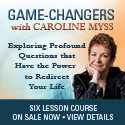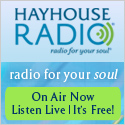The Reiki Digest for July 26, 2006: Back to the Source(s) of Reiki
Book Reviews:
The Reiki Sourcebook
Bronwen and Frans Stiene
O Books
2003
ISBN 1-903816-55-6
The Japanese Art of Reiki
Bronwen and Frans Stiene
O Books
2005
ISBN 1-905047 02-9
If you are a Reiki practitioner who learned the art anywhere outside Japan, there are three things you need to do right now:
1) Sit down.
2) Get these books and read them, footnotes and all.
3) Revise your understanding of Reiki and your practice accordingly
Thanks to the thorough research of Australian-based Reiki Masters Bronwen and Frans Stiene, much of what you learned about this gentle healing art is about to be shaken right down to its foundation. You can choose whether to sway like a Tokyo high-rise or crumble in response, but either way, you're in for some shock waves. Neither of these books is new, but somehow news of them has been slow in reaching the North American Reiki community. That's a pity, but easily rectifiable as you can easily buy them here and elsewhere online.
Born in Japan in the early 20th Century, Reiki was then borne to Hawaii and from there to the rest of the world by a Japanese-American woman, Hawayo Takata, who managed to study it even though she was a foreigner, thanks to the open-mindedness and foresight of Chujiro Hayashi, a doctor who learned the art from its founder, Mikao Usui. For decades, it seemed from outside Japan that Takata and those who learned from her lineage were the world's only Reiki practitioners. It even appears that Takata herself may have made that claim, just as she taught some other things about Reiki that weren't exactly true. For example, Mikao Usui, or as the Stienes refer to him Japanese-style in The Japanese Art of Reiki, Usui Mikao,was not a doctor, as Takata taught, nor a Christian, nor a minister, nor was he a university president or a theology school graduate. We can easily guess at the reasons behind some of Takata's truth-bending, since a Japanese-American practicing a Buddhist-based healing art in Hawaii around the time of Pearl Harbor might have met not only resistance but hostility in a nation that was rounding up Japanese-Americans by the thousands and locking them up in the desert behind barbed wire. We can as easily wonder what else got lost, added, or changed in her translations of the Reiki legacy, in practice as well as story.
Then in the early 1990s, German Reiki Master Frank Arjava Petter, then living in Japan and married to a Japanese woman, Chetna Kobiyashi, helped what we now call Western Reiki to reconnect not only with its roots in Japan, but its cousins there as well: practitioners who learned from Usui's other students, and a decades-old society dedicated to the practice and study of Reiki. Petter revealed what he had discovered in several books, also easily available here and elsewhere online. The Reiki story, on both sides of the gap, had to be rewritten, and the practice is the better for it.
It was Petter's work that led the Stienes – he's from Holland, she's from Australia – to seek more information after becoming (Western) Reiki Masters themselves in 1998. They studied Western Reiki in Nepal, first taught Reiki in India, and have since traveled to Japan to study with (Eastern) Reiki practitioners Hiroshi Doi and Hyakuten Inamoto, among others, and they now continue researching and teaching Reiki from the Japanese perspective from their base, The International House of Reiki in Sydney, Australia, and in their continued travels around the world.
A few excerpts of the reviews their work has received outside the U.S.:
“What an incredible work...”
“The Reiki Sourcebook is a gift to humanity...”
“You will find EVERYTHING you would like to know about Reiki in this book...”
“The definitive manual...”
“The most complete work ever done on Reiki...”
The Reiki Digest enthusiastically concurs. If you practice Reiki, you need to read these books.
Just some highlights of the surprising revelations in the Stienes' impeccably researched and documented work:
Mikao Usui did not refer to his practice as Reiki.
Most translations of the term “Reiki” only include the second syllable.
In Japan, everybody gets an attunement at every meeting of the Usui Reiki Ryoho Gakkai, a traditional Reiki society that remains closed to foreigners.
The Reiki symbols and their names are not necessarily connected to each other.
Mikao Usui was a teacher long before he developed Reiki, and people are still studying and practicing his pre-Reiki teachings today.
One of his pre-Reiki students was still alive – at 105 – a year ago when The Japanese Art of Reiki was published, and provided some of the information in both books. Other information came from other centenarian students of Usui, students as well as classmates of Hayashi, and other reliable sources.
Born into a samurai family of privileged rank, Usui studied martial arts at a young age and was a longtime practitioner of an exercise and meditative practice known in Japan as ki ko and elsewhere by its Chinese name, qigong or chi kung. Japan was beginning to open itself to the rest of the world at the time of Usui's birth, after a long period of isolation. At the time he developed Reiki, Japan was also undergoing a spiritual transformation. But Usui didn't invent hands-on healing. By the time Usui retreated to Mount Kurama for the legendary 21-day fast that led to his discovery of Reiki, the Japanese language already had not one but two words for the practice: teate, the generic term for “palm-healing,” and tenohira, a more structured form.
Reiki has roots not only in martial arts, qigong, and esoteric Buddhism, but in Shinto and Taoism, and in Shugendo, which the Stienes describe as “esoteric mountain Buddhism.” Shugendo itself has roots tangled deeply in a mixture of Shintoism (the indigenous faith of Japan), Taoism, Buddhism, and shamanism. As different faiths and traditions were outlawed or reinstated by various Japanese governments, the Japanese culture wove them together and tended to call their beliefs and practices whatever name was approved at a given time, so unraveling those threads and following them isn't likely after so many generations.
The branches of the Reiki tree are nearly as tangled as those roots, but the Stienes have put together a chart that includes them all along with their origins. It isn't exactly a family reunion, since much of Japanese Reiki is still off-limits to foreigners, but at least Reiki East and Reiki West have not only met but are getting better acquainted, to the benefit of the entire Reiki world.
The Reiki Sourcebook presents the results of the Stienes' research in meticulous detail: it's a Reiki encyclopedia, complete with illustrated reference sections for both Japanese and Western Reiki techniques, a Reiki glossary, and extensive lists of resources. The Japanese Art of Reiki, subtitled, “A Practical Guide to Self-Healing,” is completely devoted to Reiki self-practice, and its clear illustrations make it easy to follow.
One practice illustrated in The Japanese Art of Reiki is from the first level: Kenyoku-ho, the dry bath, which comes from Shintoism. The dry bath is a way of clearing the body's energy field (known in Western medicine as the putative energy field), and for practitioners, a way of ending a session and separating from the client's energy field.
The Stienes have another illustration, a full-color animated one, of kenyoku-ho on their web site (click on the picture that says "Try an interactive Japanese Reiki technique now"). It's one of their contributions to Journey to the Wild Divine, the interactive biofeedback program developed by Dr. Deepak Chopra, one of the best-known bridges between Western and Eastern medicine. The same animated version of Kenyoku-ho is featured in Wisdom Quest, the second version of Journey to the Wild Divine. All Reiki practitioners will enjoy it, but so will anyone else who wants to take advantage of this simple, quick energy-clearing technique. You can do it in an elevator in less time than it takes to travel from one floor to another.
As if their books and teaching weren't enough of a contribution to the worldwide practice of Reiki, the Stienes add to their work once a week with The Reiki Show, the world's first podcast devoted to Reiki. This week, they have an excellent interview with Reiki Master Pamela Miles, author of Reiki: A Comprehensive Guide, about her groundbreaking work with Reiki in medicine. Miles talks about her work with Reiki in the operating room, even during heart transplants, and busts some Reiki myths. Don't miss it – in fact, if you subscribe, you can listen to The Reiki Show every week.
But wait...there's more. Three more of the Stienes' projects are scheduled to be published this year and next.
Because of the importance of these two books, we'll save the usual Reiki roundup and Celeb-Reiki for next week. As always, your comments are welcome.































